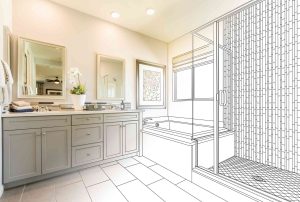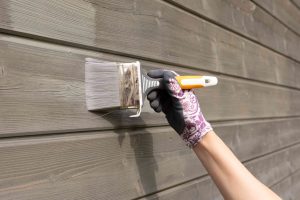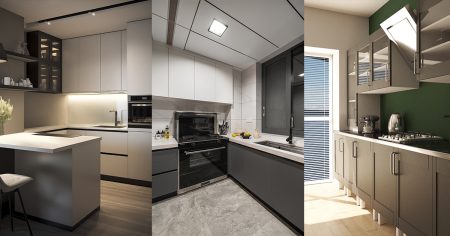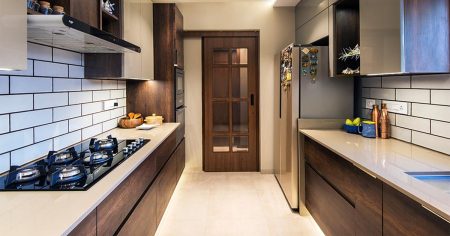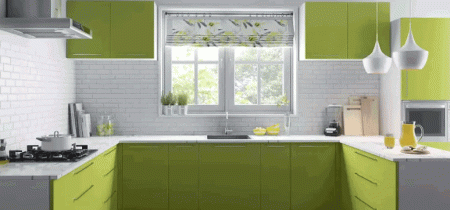Some people say cupboard, some people say cabinet—but is there an actual difference? They’re not exactly the same thing, but they’re more similar than you think.
Read on to learn the similarities and key differences between cupboards and cabinets.
Cupboard vs. Cabinet
Today, a cupboard and a cabinet are basically the same. They’re really two sides of the same coin because, essentially, a cupboard is the early version of the cabinet.
Kitchen cupboards were initially used to house dishes like cups, and then they were mostly used for storage and display.
The early cabinets were part storage space for food staples, cooking utensils and appliances, and part workstation for everyday chores like food prep and ironing.
History of Cabinets and Cupboards
Because the origin of the cabinet is a cupboard, their histories are linked.
Cupboards originated in the Middle Ages and their predominant use was connected to the storage of food-serving items. The initial use began to shift with the creation of formal kitchen spaces.
The addition of shelving to the original cupboard concept and design—which more resembled a table—allowed for more items to be housed in the standalone cupboard. But this kitchen staple got its most significant design upgrade in the 16th century when fitted doors were added to this basic design.
It was at this point that the cupboard basically became a cabinet.
Cabinets became an American household staple a couple of centuries later, in the 1890s, with the first name-brand or designer cabinet to gain popularity in 1900 being the Hoosier Cabinet.
Like the cupboards that preceded it, these early cabinets were free-standing structures with drawers, spaces enclosed with doors, a shelf, and even an ironing board–all in one. They eventually evolved to become wall-mounted with shelving.
The Distinction Isn’t Important in Design
In the world of design, the words cupboard and cabinet are used almost interchangeably.
“I actually had to look up the difference between cupboard and cabinets!” says Natasha Hirschfeld, architectural and interior designer at Studio Patina, in response to our query for her perspective.
“It seems I’ve been using the term ‘cabinet’ to describe everything, and simply differentiating between styles by specifying glass-front or wood-door cabinet,” Hirschfeld says.
Today, the term cabinet is commonly used to describe enclosed kitchen spaces used to store both food items and serving items like cups, plates, saucers, and the like. Many people don’t say cupboard at all.
The idea of the cupboard being something different from a cabinet has persisted in one way. Some people use it when talking about a pantry—a pantry cupboard. Pantry cupboards resemble closets, as they are encased by a single door and have ample shelving and space. The difference between a pantry cupboard and a walk-in pantry is like the difference between a closet and a walk-in closet. Both are big enough to stand in, but only one enough if big enough to walk around inside.
Key Design Differences
If you’re trying to determine how to best use cupboards and cabinets as well as gain some insight on how they should be designed for optimal use, Hirschfeld shares some professional advice.
“I do advise wood-front upper cabinets close to a range hood for the concealed storage of cooking and baking necessities and any other items and tools that would make the kitchen look cluttered if they were visible through the doors,” she says.
Most kitchens are designed to include some storage space strategically built around the cooking area, and for those in particular Hirschfeld says that wood-facing doors are ideal.
She explains, “Range-adjacent cabinets have the added benefit of the wood doors being easier to wipe down if grease spray manages to reach them—which it certainly will.”
Hirschfeld also points out that most kitchens have high cabinets as well as low cabinets, and the positioning of these should not be overlooked.
Glass doors have become increasingly popular in recent years as a way to elevate the look of the cabinetry as well as maximize the display and wow factor of these storage spaces, but when it comes to eye-pleasing glass, it appears that cabinets distinguish themselves from cupboards/pantries yet again.
Higher cabinets are better suited for glass doors whereas lower cabinets and cupboards/pantries should stick to wood doors for both safety and aesthetic purposes. With the depth of lower cabinets and pantries, you’re more likely to store less picturesque items in them, making a wooden door the preferred style.
“It’s very pleasant to have glass doors on any upper cabinets that house glassware, plates, bowls, cute pitchers, and other pieces meant to be visually appreciated,” notes Hirschfeld.
Read the full article here


